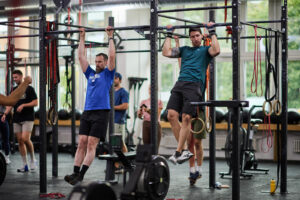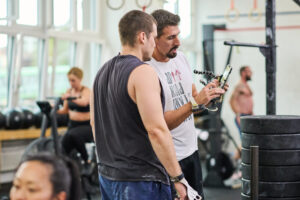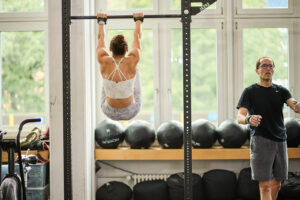
When we talk about fitness, flashy usually wins. Heavy barbells, intense metcons, maximal lifts, and advanced gymnastics often steal the spotlight. But behind every sustainably fit, healthy, and high-performing body lies a quiet, often ignored foundation: basic conditioning—also known as Zone 2 training.
And if you’re skipping it, you’re missing a crucial piece of your long-term health and performance puzzle.
What is Zone 2 training?
Zone 2 refers to a specific heart rate zone—about 60–70% of your maximum heart rate—where you’re working aerobically but can still carry on a conversation. Think of it as a brisk walk, an easy bike ride, or a light jog. For some, it could even be a hike with a slight incline. It’s not sexy, not fast, and definitely not a post-worthy sweat fest.
But that’s exactly the point.
Zone 2 training builds the engine. It’s your body’s base level conditioning—like upgrading from a gas tank to a hybrid engine. You become more efficient at using fat for fuel, clearing metabolic by-products, and delivering oxygen where it’s needed.
Why does it matter?
We get it. High-intensity training feels more rewarding. It’s hard. You sweat. You feel like you crushed it. But doing only intense work with no base is like flooring a sports car with no oil change—it works until it doesn’t.
Here’s what Zone 2 training does for you:
- Improves heart health: Your heart gets stronger and more efficient at lower stress levels.
- Builds endurance: You can do more, for longer, with less fatigue.
- Burns fat efficiently: You train your body to use fat as a fuel source rather than burning out your sugar reserves too fast.
- Boosts recovery: Low-intensity aerobic work can help you recover faster between tough sessions.
- Supports longevity: VO2 max (your body’s ability to use oxygen) is one of the best predictors of lifespan—and Zone 2 training improves it directly.
- Increases total training volume: You can train more frequently without burnout.
But here’s the catch: it feels like nothing
Especially for CrossFitters.
If you’re used to redlining in WODs and pushing into the pain cave regularly, basic conditioning can feel like you’re not even training. You’re doing something—but your brain is screaming, “This can’t be enough.”
And that’s exactly the trap.
CrossFitters also tend to be so well adapted to high heart rates that you can still speak well past your Zone 2 range. Your internal gauge is off. What feels like “easy” might still be too hard to reap the true benefits of aerobic base building.
To make things more confusing, most people are unaware of how underdeveloped their aerobic base is—until they start building it. They may feel sluggish, breathless on hikes, or unable to recover quickly between intense efforts, without realizing it stems from a neglected energy system. The symptoms are subtle but real.
This is why a heart rate monitor is your best friend.
It gives you real-time feedback, keeps you honest, and teaches you what Zone 2 actually feels like—for you. And that might mean walking instead of jogging. Slowing the bike down. Taking the ego out of the equation.
How to add it in
- Aim for 2–3 sessions per week of 30–60 minutes.
- Stay at 60–70% of your max heart rate (roughly 180 minus your age as a guide, or better yet—use a monitor).
- You should be able to talk in full sentences—but don’t trust this alone if you’re a seasoned CrossFitter.
- Choose any low-skill movement: walk, row, bike, hike, or light jog.
Basic conditioning isn’t a punishment or a regression—it’s your secret weapon for longevity, energy, and resilience. Ignore it, and you’re building fitness on shaky ground.
Train smart. Build your base. Stay in the game.




